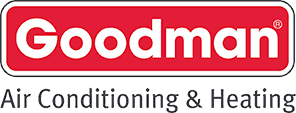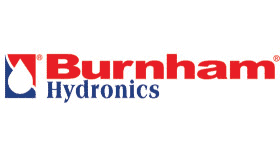The sweltering summer season can put your HVAC systems through the wringer, but to remain comfortable during the dog days of summer, you need to maintain them well. For many local homeowners, this involves knowing some of the ins and outs of their particular make or model. For example, you may need to ask, “Should the furnace damper be open or closed in the summer?”
Read on to discover the best way to position your HVAC damper for efficient airflow with this helpful guide. And if you experience issues with your furnace damper, Streamwood’s reliable furnace repair experts at Leith Heating & Cooling can offer quick, effective solutions.
What Is a Furnace Damper?
A furnace damper, also called a duct or HVAC damper, is a small metal plate that helps control the airflow throughout your home. It connects to a lever that rotates to redirect airflow throughout your ductwork. For example, opening a damper allows the temperature-controlled air from your furnace or air conditioner to flow through that area of your duct system, while closing it restricts that airflow.
It’s likely that your home has several furnace dampers, depending on the size of your HVAC system and how many floors of your house it covers. Dampers usually appear near your furnace on the large metal box known as the plenum. Typically, you can locate these essential components within the main supply trunks of your duct system.
This guide focuses primarily on traditional dampers, which you must open or close manually to control airflow. However, different types of furnaces may utilize different dampers. For example, smart-zone HVAC systems will automatically open or close dampers for the different zones.
How Do Furnace Dampers Impact Your Home’s Temperature?
The temperature of different rooms in your house may vary depending on the position of your HVAC damper. This is because the damper’s plate either admits or restricts airflow to certain areas. Unfortunately, there is no one-size-fits-all solution for striking the right balance with your comfort level, though experts can help streamline the system.
You must consider the layout of your home and duct system as well as which HVAC system you’re currently running. For example, if you have a two-story house, you may notice that the upstairs rooms become too hot at certain times of the year. If your furnace damper is open, this will push hot air through the duct, and since hot air rises, the heat will infiltrate second-story rooms.
Other zones of your house may be too cold. This is why it’s essential to understand how HVAC dampers work and when you should adjust them. You should also be mindful of how the temperature in your home fluctuates every season so that you can position your dampers accordingly.
Should a Furnace Damper Be Open or Closed in the Summer?
Once you locate all of the HVAC dampers in your home, you can adjust them to keep yourself comfortable, even amid summer heat waves. We recommend opening the dampers that lead to any upstairs ductwork during the summer to transfer cool air through your ducts and provide relief upstairs.
Heat resists air pressure and tends to flow to higher spots, which makes the upstairs of two-story homes already susceptible to uncomfortable summers. Opening an upstairs furnace damper alleviates some of the naturally-rising heat by directing cool air from your HVAC system into those vulnerable areas.
Once you open a second-story furnace damper, locate the plate that controls your basement or main-level air ducts. Be sure to close this damper because cool air tends to sink, which makes these areas prone to faster cooling. You want to maximize the amount of cool air that your upstairs rooms receive, so shut off the ducts’ access to lower levels.
Adjusting Furnace Dampers in the Winter
Now that you have an answer to the question. “Should my furnace damper be open or closed in the summer?” it’s time to figure out how to adjust your dampers for the winter months. The typical solution is to do the opposite: close the damper that controls your upstairs ductwork. This way, you’ll prevent these rooms from getting too hot since they already receive natural heat from the air that rises from lower levels.
Similarly, you should open the damper that sends heat to your downstairs ducts, as this will quickly warm the space. You’ll also get more even hot air distribution.
How To Test Whether Furnace Dampers Are Open or Closed
Figuring out the position of your furnace dampers is fairly simple but often requires two people. Have another person place their hand over a vent while your air conditioner or furnace is running, and then adjust the damper yourself. Your helper can report any changes to the vent’s airflow so you know whether or not the damper is open.
For example, an upstairs vent with little to no air flowing through it may experience a burst of refreshing air upon moving the damper’s level. This indicates the damper is open and promotes airflow to that section of the house.
Reasons Why Your Furnace Dampers Aren’t Regulating Your Indoor Temperature
If you adjust your furnace dampers every season but still find certain rooms too hot or too cold, other HVAC issues are likely to blame, such as:
- Blocked vents
- Clogged air filters
- Leaky ducts
Check to make sure that no furniture or other objects are blocking your vents, and change your air filter since trapped dirt particles can limit airflow. If these steps don’t solve the problem, you may have cracks in your ductwork that need repairing.
Get Quality HVAC Solutions from Leith Heating & Cooling
Should a furnace damper be open or closed in the summer? Do I really need furnace maintenance, and what does it entail? Get answers from the skilled HVAC technicians at Leith Heating & Cooling.
Our experienced team at Leith Heating & Cooling is eager to help, so reach out to our friendly team whenever you need skilled HVAC technicians. Call 847-565-1568 today to schedule a consultation in Elgin, Illinois, and the surrounding areas.











